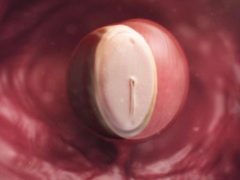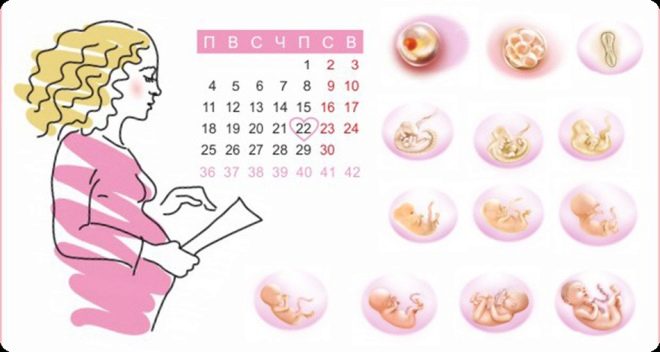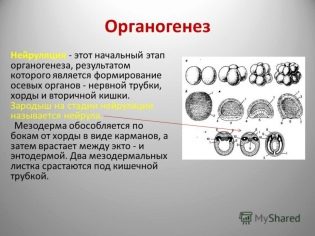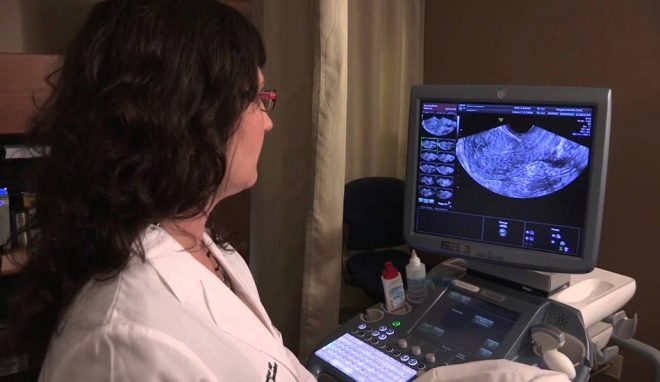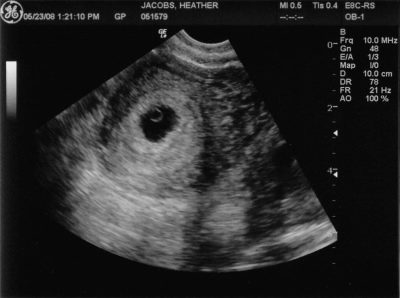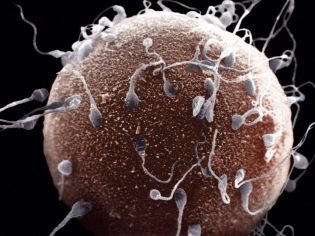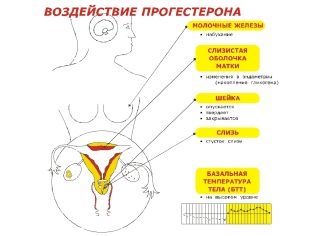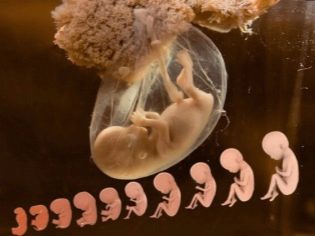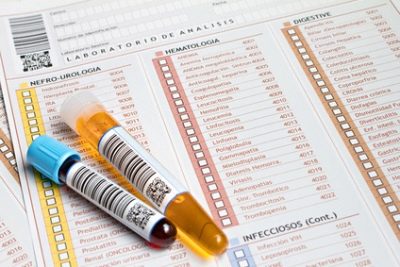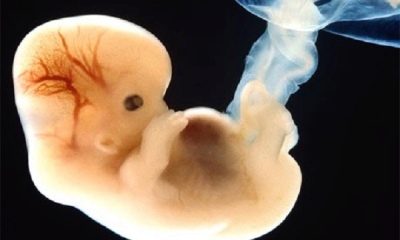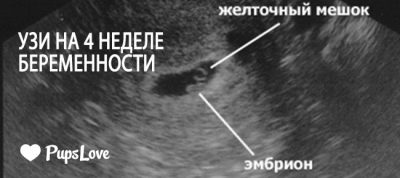4 week of pregnancy: what happens to the embryo and the expectant mother?
One of the most crucial stages in the course of pregnancy is its initial weeks. At this time, the physiology of the female body changes significantly. Also, huge changes occur daily in the body of a small embryo.
Timing
3-4 week refers to the first trimester of pregnancy. This time is characterized by the initial manifestations of changes in the female body. The presence of a baby in the uterus already contributes to the change in the hormonal background of his mother.
To determine the age of the child during his intrauterine life, doctors use a special counting system. It includes obstetric weeks and months. This technique is different from the calendar, which is mainly used by future mothers.
4 obstetric week of pregnancy is equivalent to 2 weeks from conception. Thus, when calculating with the help of the calendar method, the time will always be somewhat less.
In order not to be confused, doctors recommend to expectant mothers also to use the system for calculating the prenatal age of a baby by calculating it in obstetric weeks or months.
Factors affecting the development of the baby
2 week from conception is an extremely important period of the formation of the child. It is important to note that at this time the embryo begins to develop very quickly. This leads to the fact that with the mother and baby interesting biological changes begin to occur.
The development of the baby is influenced by multiple factors. They can be both internal and external. The intensity of exposure in some cases can be significant, which can lead to disruption of the normal course of fetal development of the baby.
The most important internal factor affecting the baby's developing in my mother's belly is the emotional mood of the woman.. From the very first weeks of pregnancy, the emotions and mood of the future mother begin to influence the child.
External influences include a variety of factors. One of them is the residence of the future mother. Megapolis conditions can have a negative impact on the female body during childbirth. Polluted air, the presence of highways and emissions in the atmospheric air do not contribute to the physiological course of pregnancy.
Also to external influences can be attributed, and features of the lifestyle, which is the future mother. Smoking, alcohol, unhealthy diet have a very adverse effect on both the woman and her baby.
Medication is also able to worsen the course of pregnancy. It is very important that a woman learn about her position as early as possible.Especially if she is forced to take constantly any medications due to the presence of disease. Many of these agents can have an adverse effect on the fetus.
During the first half of pregnancy, a very important process - organogenesis - actively takes place in the children's forming organism. It is characterized by the formation of the internal organs and systems of the child.
If this process is disrupted for some reason, it may contribute to the emergence of serious health problems in the future. Thus, disorders of organogenesis can lead to the development of defects in the structure of important internal organs and various anomalies in the child.
Condition of a woman
This period of pregnancy is still very small. In most cases, a woman does not even suspect that she is expecting a baby. However, serious changes are already beginning to occur in her body.
The woman “writes off” many of the sensations that arise to premenstrual syndrome (PMS). We can say that they are really something similar. However, the physiology of their appearance is different.
At the 4th week of pregnancy, a woman already has hormonal changes. The increase in the blood level of many hormones contributes to the fact that the expectant mother has very specific symptoms. It often happens that a woman simply does not pay serious attention to them.
In most cases, the development of characteristic symptoms occurs against the background of a delayed menstruation. This is the main clinical sign of pregnancy. However, in each case there are exceptions.
Sensations and symptoms
The health of the future mother in the first weeks of pregnancy begins to change. One of the characteristic signs is changing emotional background.
Changing emotions
Doctors call mood swings emotional lability. So, a pregnant woman can enjoy something very much, and after a few minutes she is already crying. Such specific mood swings are due to the changing hormonal background.
Many women at this stage of pregnancy become overly aggressive and irritable. An increase in the blood of the female sex hormone, progesterone, leads to the appearance of such changes in mood. It is one of the most important hormonal substances during pregnancy.
During this period, a woman has some changes in mental activity. Thus, attention concentration and short-term memory gradually begin to decline. This is a physiological feature during pregnancy.
A pregnant woman's ability to perform complex tasks that require special concentration of attention decreases. This leads to the fact that at work she can get tired faster.
Doctors often repeat that expectant mothers can not worry. This phrase is extremely important and not at all banal. During pregnancy, a woman's ability to endure intense psycho-emotional effects is significantly reduced.
Due to its physiological characteristics, it becomes easily vulnerable in various stressful situations. In order to protect your body from stress, future mother should always be in a good mood and have an optimistic attitude.
Changes in the hormonal background contribute to the fact that a woman increases drowsiness and general weakness. So, in the daytime, she feels that she really wants to sleep. Some expectant mothers may have difficulty falling asleep.
Many women note that at the 3-4th week of pregnancy, different smells were strongly felt. In some cases, such a change in the sense of smell gave them the strongest discomfort. For example, being in a smoky room or in a dining room could cause them to experience a nausea or even vomiting.
Dyspeptic disorders
A characteristic clinical characteristic of this period is the appearance of changes associated with dyspepsia. One of them is nausea. With this symptom, unfortunately, almost every woman is familiar who has already become a mother.
This symptom occurs mainly in the morning. In some cases, nausea can be debilitating. Some women can be very sick and all day long. This helps reduce appetite and distorts eating behavior.
In order to reduce the manifestation of nausea, future mothers begin to eat lemons and other citrus fruits, dissolve peppermint candies. In some cases, such measures only help to reduce this unfavorable symptom.
Against the background of debilitating nausea, a woman may develop vomiting. It usually occurs in the morning. However, exceptions are possible. In some cases, vomiting develops against the background of complete well-being. To provoke its appearance can also use any product.
A rather specific clinical sign that may develop at this stage of pregnancy is a change in taste sensations. Thus, a familiar favorite food does not bring joy to a woman. She seems to her more fresh and tasteless.
At this time, the future mother may have a craving for spicy or spicy food. Also, some pregnant women may want to eat fragrant chips or crackers. The abundance of flavoring makes their taste more vivid. Often, women begin to feel a strong need for fast food or food generously flavored with various spices.
In some women, salivation may increase. This phenomenon is largely contributed to the changing hormones. The intensive work of the salivary glands also affects the taste preferences of women during this period.
Changes in the work of the reproductive organs
In the initial period of pregnancy, the level of female sex hormones begins to change. This is due to nature so that the prenatal development of the baby proceeds as it should. Changes in hormonal levels lead to the fact that the physiology of the female genital organs begins to change.
One of the characteristic changes is the engorgement of the chest. The mammary glands become more dense, swell and somewhat increase in size. Some women have breast tenderness. It is especially pronounced during palpation (palpation). However, some women note that by this time of pregnancy, their breasts have already stopped hurting.
These changes are individual, and their severity varies. If the future mother has fibrocystic mastopathy or other diseases of the mammary glands, the adverse symptoms can be expressed somewhat more intensely.
The emergence of a specific secret from the vagina is also quite a characteristic symptom of this gestational age. Allocations can be very different. The volume of discharge is often also different.
In the fourth week, the expectant mother is waiting for the appearance of menstruation and, as a rule, does not know at all about the presence of pregnancy. Some women at this time may appear bloody discharge from the genital tract. They perceive them as ordinary periods, and do not go to the pharmacy for a pregnancy test. Doctors say that often such situations are genetic. So, if the mother, grandmother or sister appeared during the first weeks of pregnancy, "monthly", then the likelihood of the development of similar symptoms and the woman herself.
"Daubs" from the genital tract can be a symptom of a variety of conditions. Quite physiological reasons can lead to its appearance. In this case, the appearance of discharge due to female hormones of pregnancy.
Smearing bloody discharge from the genital tract can also be a sign of certain pathologies of the reproductive organs.For example, inflammatory and traumatic injuries of the cervix are accompanied by the development of this unfavorable symptom. Only a gynecologist can distinguish the norm from the pathology. For this, he conducts a future mother's clinical examination on a gynecological chair. During this simple examination, the doctor will be able to detect signs of pregnancy, as well as determine the presence of concomitant diseases of the reproductive organs of a woman.
Discharge from the genital tract is also brown. The appearance of such a symptom may also be quite physiological. If the discharge does not have a fetid odor and is produced in a small amount, then this is usually the result of the normal course of pregnancy.
In most cases, the vaginal discharge from a woman at this stage of carrying a baby has a light color. He has no smell or very little. Resembles discharge from the genital tract light or clear liquid. The amount of discharge may be different.
If, against the background of dark brown discharge, a woman has a pulling pain in the lower abdomen or in the lower back, then she should immediately contact her doctor. Such symptoms may be a manifestation of the onset of spontaneous miscarriage. In this case, a mandatory clinical examination by a gynecologist is required.
Yellow fetid secretions from the genital tract may be due to the onset of a bacterial infection. In this case, as a rule, the general well-being of a pregnant woman also worsens. She may have a fever or tenderness in the lower abdomen.
The appearance of abundant yellow discharge is a significant reason for seeking medical attention. The doctor in this case should take a smear to conduct bacteriological examination. This laboratory test will accurately detect pathogens causing bacterial inflammation in the genital tract.
After establishing the pathology, the doctor will prescribe a comprehensive treatment to the expectant mother. Normalize the vaginal microflora and eliminate the pathogenic doctor can advise using antibacterial drugs. Independently take such funds can not, as many antibiotics can have an adverse effect on the fetus. That is why they are appointed by experts only for strict medical reasons.
The choice should be carried out by an experienced doctor. While taking antibacterial agents, the general condition of the mother, as well as her baby, is necessarily evaluated.
Abundant bleeding is a very unfavorable clinical sign. If a woman has a strong blood flow from the vagina, then this may be a manifestation of the onset of spontaneous abortion. Often this symptom is accompanied by the appearance of pain in the lower abdomen. With the development of these clinical signs, the expectant mother should immediately seek medical attention.
The appearance of blood on underwear a woman may notice after having sex. In this case, the unpleasant symptoms completely disappear on the second day after sexual intercourse.
Pregnancy does not require complete restriction of sexual life. If everything is proceeding normally, then you should not be afraid for the baby. A couple should only choose a more comfortable posture. If pregnancy proceeds with complications, then in this case it is better to discuss the possibility of sex life with an obstetrician-gynecologist.
Pain in the spine
In the early stages of pregnancy, women may experience slight discomfort in the back. As the fetus grows in my mother's abdomen, this clinical sign will begin to progress.
A woman feels that she has a back ache in this period, as a rule, after performing any physical exertion. It is important to note that the intensity of the load, leading to the appearance of pain, can be quite common.
Most often, the pain appears in the lumbar region.In some women, pain also covers the coccyx. Unpleasant sensations in these anatomical zones can appear in a woman after a long stay in an uncomfortable position. Often, future mothers who work in the office and sit for a long time complain about the appearance of pain in the back and tailbone.
Weight lifting can also contribute to the fact that a woman may feel that she has a backache. During pregnancy it is better not to lift heavy objects. This recommendation should be followed not only in the first weeks, but also throughout the entire period of carrying the baby.
Women suffering from diseases of the musculoskeletal system, may feel unpleasant symptoms somewhat stronger. So, if the expectant mother has osteochondrosis of the lumbar spine, then even daily household loads can lead to the appearance of pain in her lumbar region.
In order for the pain in the spine to disturb a woman as little as possible, she needs to carefully monitor her daily routine and rest more. Intensive exercise is better to exclude during pregnancy. An excellent choice for future mothers will be various breathing practices and exercises aimed at general relaxation.
In some cases, the woman may appear pulling sensations in the lower abdomen. They may have both physiological and pathological causes. The active development of the baby in the uterus leads to the fact that his mother has tingling or pulling pain in the lower abdomen. They arise, as a rule, at any time of the day. The severity of such manifestations may be very different. For many women, this symptom manifests itself so slightly that they almost do not feel it.
Pathological course of pregnancy, leading to its spontaneous interruption, can lead to spasmodic contractions in the lower third of the abdomen. Usually they arise suddenly against the background of the complete well-being of a woman. In this case, it is very important to provide timely medical care.
Hormonal changes can exacerbate many of the chronic diseases that are present in a woman. So, the future mother may feel that she has an ovary on the right or left side. Usually, this symptom manifests itself in women with neoplasms or various cysts in the area of this sex gland.
Slight pain may be present at this stage in all women. However, the progression of pain is an extremely unfavorable sign. The appearance of intense pain in the ovary region is a reason for going to a gynecologist. In this case, the doctor may recommend transvaginal ultrasound. This is necessary to exclude comorbidities that could lead to the appearance of this symptom in a pregnant woman.
Possible pathology in the mother
Pregnancy is a special condition for every female body. Emerging changes at this time are necessary not only to meet the growing need for the work of the woman’s vital internal organs, but also to allow for optimal intrauterine development of her baby.
So, during this period, interesting changes in the work of the immune system begin to occur. A small embryo, consisting at this stage of its life from just a few cells, already has its own genetic set of chromosomes. This is due to the merger of female and male germ cells during the implementation of conception.
The presence of such a biologically alien "object" in the female body should serve as a signal for the immune system to remove it. However, this does not happen. This feature is due to nature in order to allow natural intrauterine development.
In order for the baby to fully grow and develop in my mother's belly, physiological mechanisms are activated.Thus, the work of the woman’s immune system is somewhat reduced. This contributes to the fact that the rejection of the fetus during the normal course of pregnancy does not occur.
However, this change has a number of negative sides. Weakening of immunity provokes a decrease in the resistance of the female body to various infectious diseases. Therefore, pregnant women significantly increase the risk of possible colds and respiratory diseases.
The peak of the cold falls on the cold season. If the expectant mother does not protect her body from the piercing wind or happens to be in contact with people with viral infections, then she can easily get sick.
Symptoms of respiratory disease may be different. A sick woman usually develops a runny nose, and the sense of smell and taste are reduced. The transition of inflammation to the oropharynx contributes to the appearance of redness and tickling. A woman begins to feel that she has a sore throat.
Actively flowing inflammatory process contributes to an increase in body temperature. It usually increases to subfebrile numbers. Against the background of high body temperature, the future mother, as a rule, develops fever and chills. Intoxication symptoms are accompanied by increased dryness in the mouth and great thirst.
SARS during pregnancy can be quite a dangerous disease. The risk of developing complications of such an infection for the fetus is substantially high. For this reason, doctors do not recommend expectant mothers alone to cope with the disease. Uncontrolled use of drugs can further irreparably harm the baby.
In order to avoid this, it is better to see a doctor immediately at the first signs of SARS or flu. If a woman's body temperature has risen strongly, then she should not attend the clinic by herself. In this case, it is better to call the doctor at home.
During the treatment is very important to monitor the general well-being. If, despite therapy, there is no improvement in the general condition, then the treatment tactics should be changed.
Expectant mothers should not mindlessly use the methods of traditional medicine. Some of them can harm the baby. If a woman doubts the possibility of using any method, then she should always consult with her doctor before using it.
The effect of specific hormones on the female body
The hormonal background of a woman is always very labile. During pregnancy, it changes quite significantly.
The menstrual cycle is characterized by a strict alternation of certain female hormones. This is necessary for ovulation to occur. Without this biological process, natural conception is impossible.
After fertilization, the physiology of the female body changes. The next menstrual cycle does not begin, as conception has already occurred. This condition is accompanied by an increase in the blood of specific hormones. The most important of these are progesterone and human chorionic gonadotropin (hCG). These hormonal substances provide the physiological condition of the female body necessary for the development of the baby.
About progesterone
This hormone is an important substance during pregnancy. Its concentration is rapidly increasing in the bloodstream of a pregnant woman immediately after conception. Progesterone has many different effects on the female body.
Initially, it is synthesized by the corpus luteum. In the future, the placenta will also be involved in the formation of progesterone. This hormone is necessary not only in the first trimester, but also during the entire period of gestation of the baby.
- With the help of progesterone in the female body there is an increase in the size of the uterus.
- It also affects the contractile function of the myometrium, which is a specific prevention of a possible spontaneous miscarriage.
- Progesterone has an effect on the accumulation of subcutaneous fat. This is necessary so that the future mother has enough energy to carry the baby.
- Affects the immune system.
- Under the influence of progesterone, the mammary glands are enlarged and choked up.
- It affects the ligamentous apparatus of the small pelvis. This feature is necessary for the gradual preparation of the female body for future labor.
- Participates in the process of prenatal development of the baby.
In each period of pregnancy there are certain standards for the content of this hormone in the blood. So, in the fourth week, its concentration is approximately 18 Nmol / l.
Before going to the laboratory to pass an analysis on the determination of progesterone, the expectant mother should exclude hormonal drugs. On the eve of the study should not eat fatty and fried foods. It is also undesirable to engage in too intense sports.
About hCG
Chorionic gonatropin (hCG) is also an important pregnancy hormone. Its concentration in the blood begins to increase after fertilization of the egg. This hormone is released under the influence of a special anatomical formation - the chorion.
HCG performs in the female body a lot of different biological functions. It is necessary to maintain optimal performance of the corpus luteum, and affects the formation of steroid substances in the bloodstream of the fetus. Under the influence of hCG there is a decrease in the work of the immune system.
The first weeks of pregnancy are characterized by a rather intense increase in the level of this hormone in the blood. Such a dynamic increase in blood levels of hCG is necessary for the full development of the baby in his mother's belly.
To determine the level of hCG can be both in the blood and in the urine. The strips used to establish pregnancy are also based on the method for determining chorionic gonadotropin. Currently, you can buy them at any pharmacy. At 4 weeks of pregnancy, a pregnancy test will show a positive result.
Baby embryonic development
At this stage of pregnancy, the small embryo is still very tiny. Little time has passed since conception. But during this time the embryo has already acquired its specific appearance.
The first 4 weeks of intrauterine life of a baby are characterized by its intensive development. At this time, the children's body is very actively developing and growing rapidly. The child begins to lay all the vital internal organs, and the basic systems are formed.
During pregnancy, the child receives food from his mother. His own autonomy of the blood vessels has not yet taken place. The baby receives all the nutrients through the common blood supply system with the mother. Also, the blood vessels in his body gets oxygen.
Full formation of the cardiovascular system in the fetus occurs somewhat later. In the future, the child will have its own small heart, and even develop a heartbeat.
Anatomical features
At this stage of fetal development, a small embryo looks like a disk. His body consists of three layers. These include the yolk sac, amnion and chorion.
The outer shell is the chorion, which gives rise to the formation of important extra-embryonic organs. From it will continue to form the placenta.
Amnion is a special cavity. It will continue to be the active development of the baby. Over time, a fetal bladder forms from this amniotic structure.
The development of the baby throughout its prenatal life takes place in the aquatic environment. Amnion is a very important anatomical formation. It protects the baby from the effects of adverse external factors.
The yolk sac up to the 8th week of pregnancy performs a very important function: it participates in the process of blood formation necessary for the fetus.The organs of the musculoskeletal system, the circulatory and excretory systems will be further formed from the cells of the middle layer. This layer is also called mesoderm.
The cells of the inner layer (endoderm) will later participate in the formation of the organs of the gastrointestinal tract, the thyroid gland, and the respiratory system.
4 week is characterized by the beginning of the formation of the body of the baby. In the embryo, the head begins to change. During this period, it is somewhat reminiscent of a bit. The size of a small embryo at this time of its development is about 4 mm.
At 4 weeks of carrying a child is very high threat of miscarriage. Women who have an aggravated gynecological history are in an increased risk group. So, if the future mother’s previous pregnancies ended tragically, then the risk of spontaneous abortion increases.
If a pregnant woman suddenly had a strong pain syndrome in the lower abdomen and there was bloody discharge or even blood, then she should immediately consult a doctor.
In order to reduce the chance of miscarriage, the expectant mother should follow all the recommendations of her doctor. The limitation of intense physical exertion and the correct mode of the day will improve the future mother's well-being.
About what happens in the 4th week of pregnancy, see the next video.
